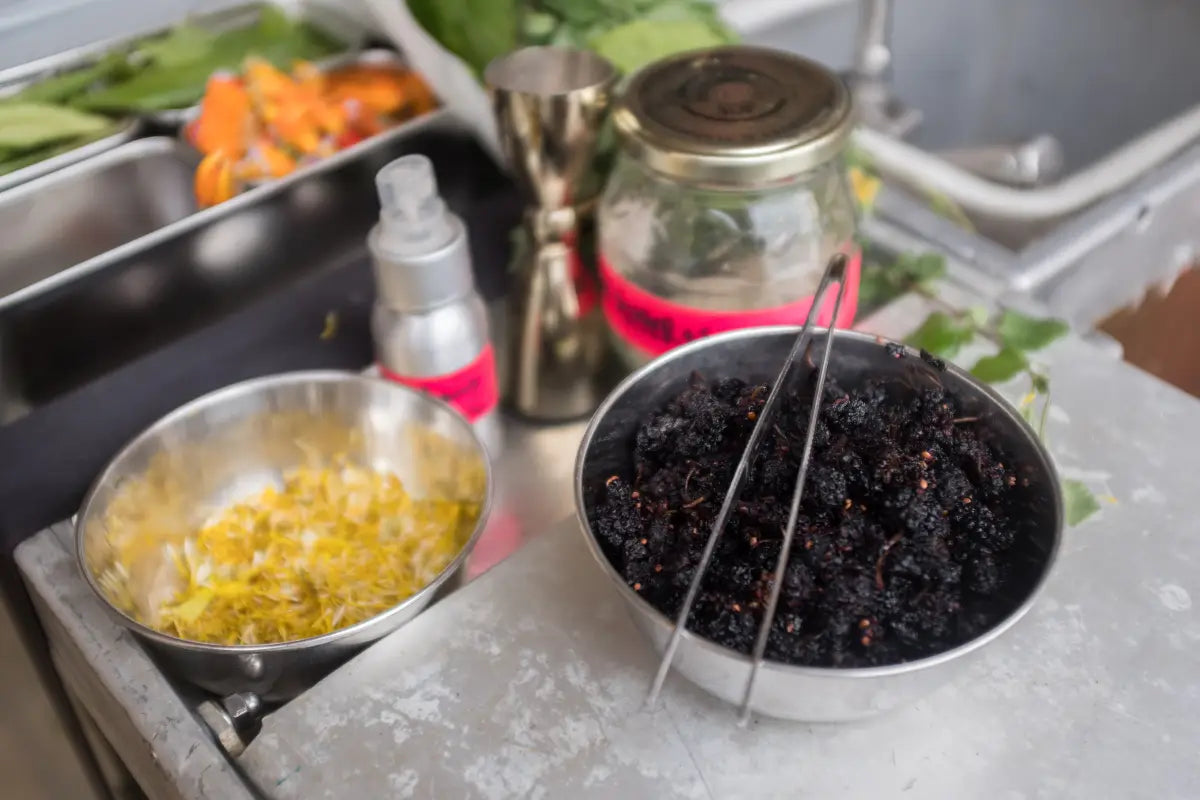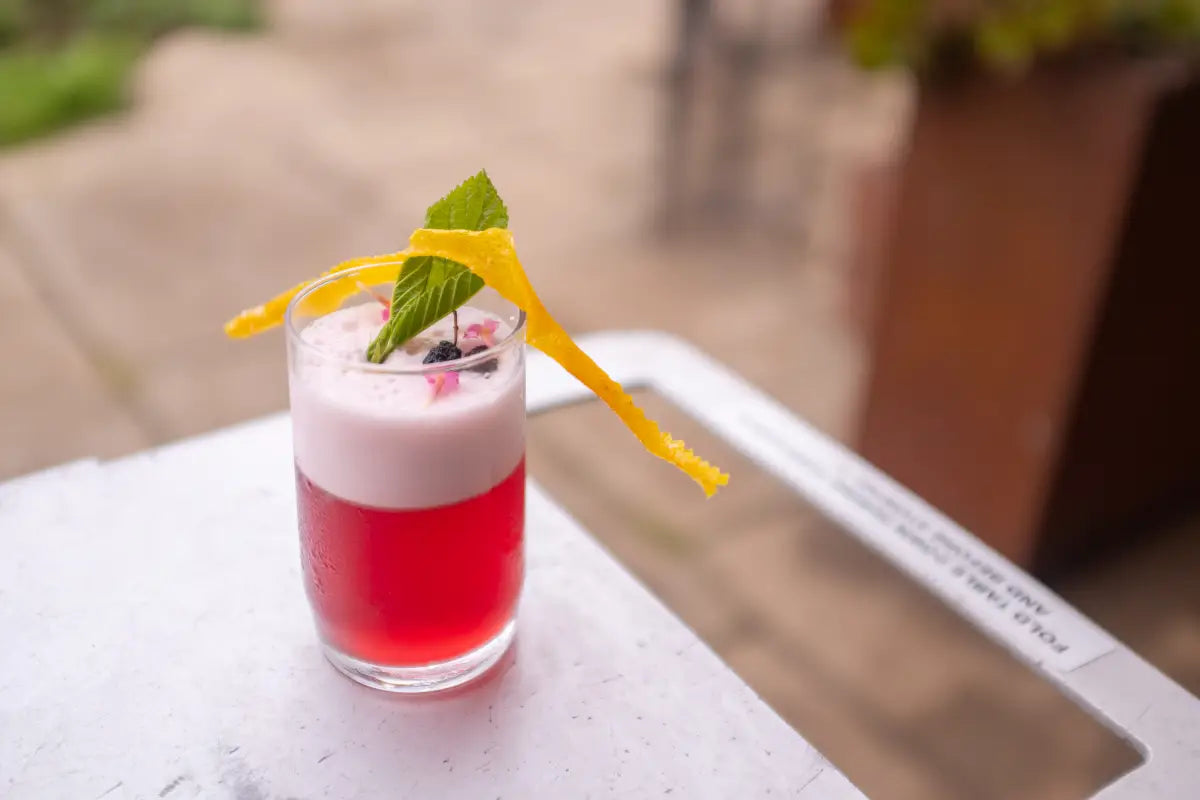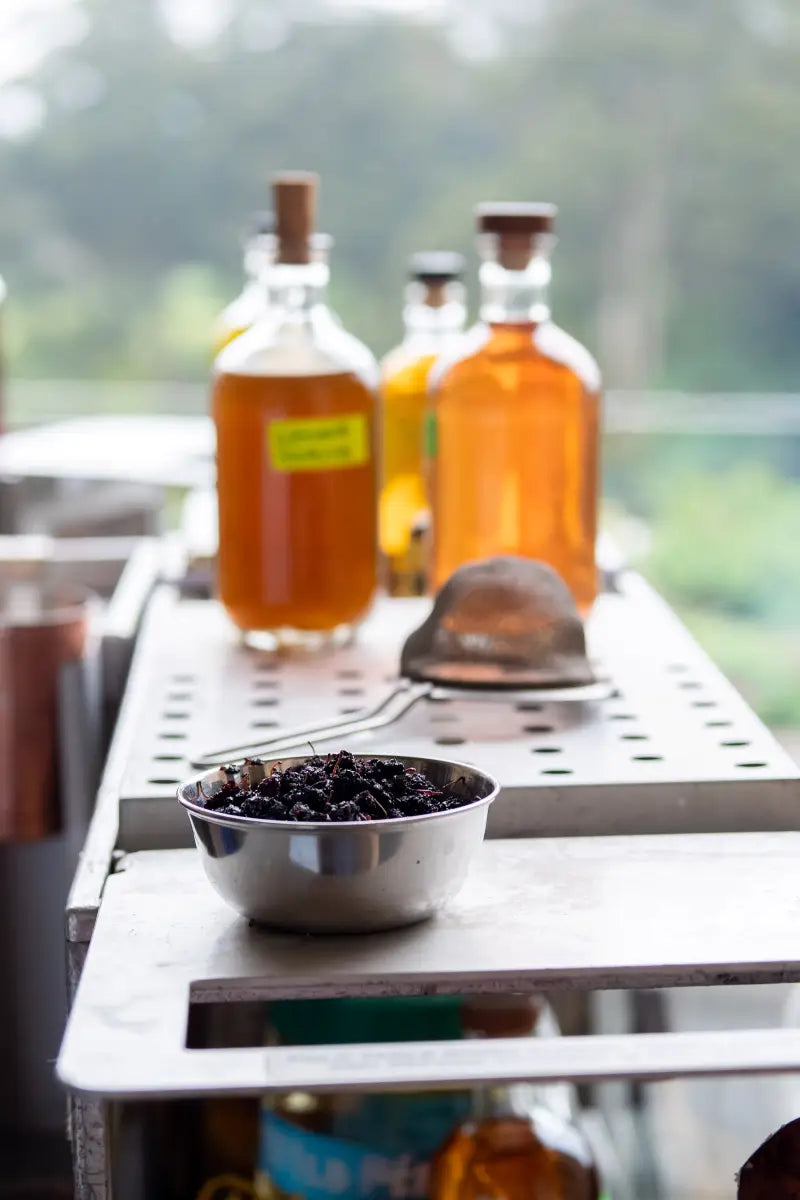Ah, the mulberry—Morus to its botanist admirers and a tree of contradictions. For a fruit that looks so harmless, these berries hold stories, history, and even a bit of danger beneath their glossy skins. You may know them from nursery rhymes or lazy summer afternoons, but what you might not know is that mulberries have whispered their way through the histories of Asia, Europe, and North America, draping themselves in myths, medicine, and even the occasional scandal.

The mulberry isn’t just one plant but a rather promiscuous genus, most notably comprising Morus alba (white mulberry), Morus rubra (red mulberry), and Morus nigra (black mulberry) along with a bevy of hybrid cultivars. The origins of these mulberries are as diverse as their colour palette: Morus alba hails from India, Morus rubra from the eastern and central United States, and Morus nigra from Southwestern Asia and the Iberian Peninsula(Mulberries (genus Morus)). White mulberries, imported to North America in a bid to foster silk production, have long since abandoned their original purpose, escaping into the wild and dotting suburban neighbourhoods across the continent.
Of course, with mulberries, it's not all benevolent berries and sweet silk. The unripe fruit and the white, milky sap lurking in the leaves have a dark side—mildly hallucinogenic, potentially nauseating, and wholly unpredictable. Those who dare to nibble on the unripe berries might be met with an unexpected gastrointestinal symphony, thanks to the alkaloids hiding within their verdant folds.
It’s hard to deny the allure of mulberries, though. Traditional Chinese medicine has employed every part of the mulberry tree—the root bark, leaves, and fruit—to treat ailments ranging from fevers and coughs to hypertension and high blood sugar. These little berries are antioxidant powerhouses, chock-full of anthocyanins, polysaccharides, and flavonoids that help to lower blood pressure, balance blood sugar, and keep the old ticker ticking away in relative peace.

In a remarkable study, Morus alba leaf extracts demonstrated a unique ability to aid weight loss, reduce fat accumulation, and improve insulin sensitivity by enhancing the activity of brown adipose tissue—a fat-burning furnace hiding in your body. Researchers found that the active compound 1-deoxynojirimycin not only helped control glucose metabolism but also modulated gut microbiota, offering a compelling reason to consider mulberry leaves as more than just silkworm fodder.
Now let’s leave the lab coats behind and enter the rich, velvet folds of history. Mulberries have long played supporting roles on the stage of civilisation. In Ancient China, the white mulberry leaf became the preferred diet of silkworms, and thus the unlikely hero in the drama of the silk trade—a fabric so enchanting it lured traders along the Silk Road and turned emperors into fashion enthusiasts. It was around 220 AD that the Greeks and Romans, ever eager to adopt foreign luxuries, started cultivating mulberries for their precious silk-producing inhabitants.
The Japanese took their fascination a step further by crafting Tengujo, the thinnest paper in the world, from mulberry stems. It’s a craft so delicate, you can see through its tissue-thin surface, a testament to how Morus has wound itself into the cultural tapestry of Asia.
And as if that weren’t enough to cement its place in the annals of lore, mulberry trees became a symbol of doomed love in Ovid’s Metamorphoses. Pyramus and Thisbe—the original star-crossed lovers—met their fate under a mulberry tree, their spilled blood forever staining the once white berries a deep, tragic red. It’s a tale that rivals Shakespeare’s Romeo and Juliet, though without the teenage angst and balcony scenes.
Perhaps mulberries' most poignant historical footnote is one that no one expected—a modern tragedy. In 2021, Lori McClintock, wife of U.S. Representative Tom McClintock, fell ill after ingesting white mulberry leaf. Her untimely death, caused by dehydration and gastroenteritis linked to the mulberry leaf, serves as a cautionary tale of this plant's dual nature—capable of healing yet potentially dangerous when misused.
Beyond the science and the stories, mulberries are also delicious. Black mulberries, with their complex, tart sweetness, are perfect for jams, wines, and jellies. They make a delightful addition to a summer cocktail, their deep hues swirling through your glass like a Monet painting in motion. At Trolley’d, we love to use mulberries as both ingredient and garnish—an edible ode to their tenacity, flavour, and the history they carry within their juice-stained skins.
So next time you see a mulberry tree, give it a nod of respect. It’s no ordinary tree, but a witness to the silk trade, the subject of myth, a medicinal cabinet, and a culinary delight. But as you pluck its dark berries, remember the balance between pleasure and danger—how even the most unassuming fruits can contain both medicine and mystery.

Morus spp. Genus name Morus. There are three main species that are used for their fruit: Morus alba, M. rubra and M. nigra (white, red and black mulberries) along with various cultivars of these species.
Common Names: White mulberry, red mulberry, black mulberry
Folk Names: Tut, Morera, Gelso
Botanical Family: Moraceae
Native Habitat: M. alba, India, M. rubra, eastern and central North America, M. nigra, Southwestern Asia and the Iberian Peninsula
Toxicity & Allergens: Unripe, green mulberries and the white sap contained in the stem can have a mild hallucinogenic effect and cause indigestion and nausea if eaten in large amounts. White mulberry leaf extract may cause mild gastrointestinal distress depending on the person and the amount ingested.
Traditional uses: Mulberries are very prevalent in Chinese medicine. The root bark, leaves and fruit have been traditionally used for the treatment of fever, cough, hyperlipidaemia, hypertension and hyperglycaemia [1].
The fresh fruits can be used in juices, wines, jams, jellies and many other cooking purposes..
Mulberry leaf extracts have been used possibly as far back as 4000 years ago in Ancient China [2]. Leaf extracts are used to control bodyweight and blood glucose [3].
Mulberry leaves, particularly those of the white mulberry are the sole food source of the silkworm (Bombyx mori). The cocoon of this larvae is a primary source of silk, with mulberries being cultivated as early as 220 AD by the Greeks and Romans [4].
Phytochemistry: The prominent functional compounds in mulberries are anthocyanins*, polysaccharides**, polyphenols***, alkaloids^, and flavonoids^^, all bioactive compounds involved in a variety of physiological processes [5]. The 1-deoxynojirimycin^^^, flavinoids and polyphenols found in mulberry leaves are likely responsible for the leaves' beneficial impacts in reducing body weight gain, insulin sensitivity and fat accumulation while having a protective effect on the liver and kidneys [6].
History: Mulberry bark was used by Buddhist monks during the Angkorian Age of the Khmer Empire of Southeast Asia to make paper which was in turn used to make books known as kraing [7].
The Japanese use kozo (the stems of mulberry trees) to make Tengujo, the thinnest paper in the world [8].
The traditional Roman plum brandy Tuicã is aged in barrels made from the wood of mulberry trees.
German folklore holds that the mulberry is evil because the devil cleans his boots with mulberry roots [9].
Mulberry trees are featured in some of Vincent van Gough’s paintings, most notably Mulberry Tree (1889).
A mulberry tree (probably M. nigra) features in the Babylonian etiological myth incorporated by Ovid into his Metamorphoses. The reddish-purple colour of the mulberry fruits is attributed to the death of lovers Pyramus and Thisbe after their blood stained the previously white fruit, at which points the gods permanently changed the fruits colour.
The Roman emperor Elagabalus (ruled from 218 to 222 CE) wore a silk robe made by silkworms fed with mulberry leaves that the Romans had cultivated for this purpose.
A 2021 Sacramento County coroner's report links white mulberry leaves to the death of Lori McClintock, wife of US Representative Tom McClintock. It claims that she died from dehydration due to gastroenteritis, caused by "adverse effects of white mulberry leaf ingestion” [2].
Powers & Magical Uses:
Mulberry protects the garden from lightning [10].
Mulberry wood is a powerful protectant against evil, with wands frequently being made out of the timber [10, 11].
Psychic dreams can be achieved by sleeping with mulberry leaves under your pillows.
A tea made from mulberry leaves can be used to draw protection sigils.

Glossary:
* Anthocyanins are coloured water-soluble pigments belonging to the phenolic group. They posses antidiabetic, anticancer, anti-inflammatory, antimicrobial, and anti-obesity effects.
** Polysaccharides are long chains of carbohydrate molecules composed of multiple smaller monosaccharides that form a major class of biomolecule. In the human body their primary functions are energy storage and structural support.
*** Polyphenols are a large family of naturally occurring organic compounds characterised by multiples of phenol units. They protect the body's tissues against oxidative stress and associated pathologies such as cancers, coronary heart disease and inflammation.
^ Alkaloids everyone’s favourite chemical compound group, used in plants and fungus to protect them from predators. In humans they have immense physiological effects, same pleasurable and others not so esteemed. Certain alkaloids have the ability to connect the Conscious with the Subconscious, especially during astral travelling.
^^ Flavinoids are a group of natural substances with variable phenolic structures, are found in fruits, vegetables, grains, bark, roots, stems, flowers, tea and wine. These natural products are well known for their beneficial effects on health and efforts are being made to isolate the ingredients so called flavonoids. Flavonoids are now considered as an indispensable component in a variety of nutraceutical, pharmaceutical, medicinal and cosmetic applications. This is attributed to their anti-oxidative, anti-inflammatory, anti-mutagenic and anti-carcinogenic properties coupled with their capacity to modulate key cellular enzyme function
^^^ 1-deoxynojirimycin is an antidiabetic agent effective at repairing glucose metabolism through interactions with important biological processes such as glycolysis and gluconeogensis [12]. It is particularly prevalent in mulberry leaves.
Acknowledgments:
-
Chan, EWC, Lye, PY & Wong, SK 2016, ‘Phytochemistry, pharmacology, and clinical trials of Morus alba’, Chinese Journal of Natural Medicines, vol. 14, issue. 1, pp. 17-30.
-
MedPage Today 2021, ‘Here’s What’s Known About The White Mulberry’, .
-
Thaipitakwong, T, Numhom, S, Aramwit, P 2018, ‘Mulberry leaves and their potential effects against cardiometabolic risks: a review of chemical compositions, biological properties and clinical efficacy’, Pharmaceutical Biology, vol. 56, issue. 1, pp. 109-118.
-
Wikipedia, Morus (plant), .
-
Wen, P, Hu, TG, Linhardt, RJ, Liao, ST, Wu, H & Zou, YX 2019, ‘Mulberry: A review of bioactive compounds and advanced processing technology’, Trends in Food Science & Technology, vol. 83, pp. 138-158.
-
Sheng, Y, Liu, J, Zheng, S, Liang, F, Luo, Y, Huang, K, Xu, W & He, X 2019, ‘Mulberry leaves ameliorate obesity through enhancing brown adipose tissue activity and modulating gut microbiota’, Food & Function, vol. 10, issue. 8, pp. 4771-4781.
-
Chhem KR, Antelme MR 2004, ‘A Khmer Medical Text The Treatment of the Four Diseases Manuscript’. Siksācakr, Journal of Cambodia Research, vol. 6, pp. 33–42.
-
Whang, Oliver 2020, "The Thinnest Paper in the World". The New York Times, .
-
Lawrence, S 2020 p. 63, Witch’s Garden: Plants in folklore, magic and traditional medicine, Royal Botanic Gardens Kew, Welbeck Publishing Group, London.
-
Cunningham, S 2000 p. 179, Cunningham’s Encyclopedia of Magical Herbs: Expanded and Revised Edition, Llewellyn Publications, Woodbury, Minnesota.
-
Florida School of Holistic Living 2021, Mulberry – Plant of the Month, March, .
-
Hu, TG, Wen, P, Shen, WZ, Liu, F, Li, Q, Li, EN, Liao, ST, Wu, H & Zou, YX 2019, ‘Effect of 1‐Deoxynojirimycin Isolated from Mulberry Leaves on Glucose Metabolism and Gut Microbiota in a Streptozotocin- Induced Diabetic Mouse Model’, Journal of Natural Products, vol. 82, pp. 2189-2200
















